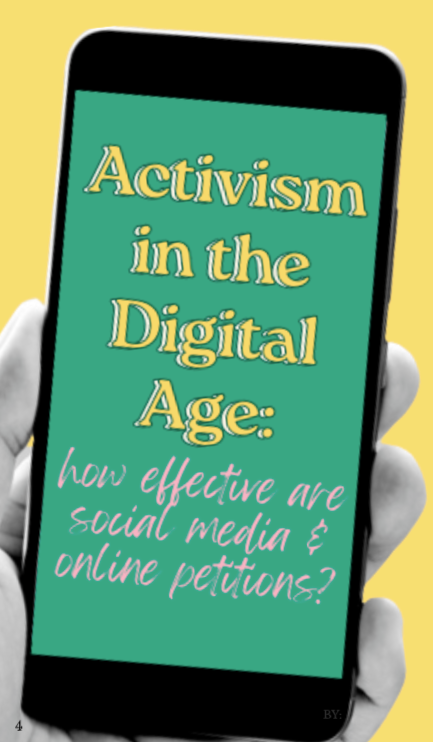Activism in the Digital Age
How effective are social media and online petitions?
June 8, 2023
Picture this, I’m scrolling on my phone, tapping through seemingly hundreds of stories until one catches my eye. I stop. Back-tracking twenty profiles, I am astonished to find that same post reshared 20 times. Could it be that newsworthy? That pressing? That urgent? Forget urgency, is it even real? My mind flutters with both excitement and concern as I tap new tab after new tab of articles to get to the bottom of it. I feel beyond distressed. Social media, for once, is right. Returning back to the initial thread, I check the comments hoping to alleviate an ounce of nausea settling from a broken world. “Sign the petition,” “call your local state lawmakers,” “if everyone could just sign the petition…” urges thousands of devices screaming for justice. As I metaphorically run to check the little box, I wonder if the little box is actually doing anything for the cause. Do online petitions have the potential to enact real change? Or, does it merely make people feel like engaged citizens? According to billmoyers.com, an online journal, petitions must be more than just a list of indignant citizens but have a theory of change: a clear, short-term goal rather than a vague “stop climate change!” or “support women’s rights!” They must also be backed by an organization, individual, or group that plans to take the petition further, using the list as a persuasive technique and a source of legitimacy for bringing their work to the legislative table. Because politics is a money game, billmoyers.com cites “going after the big donor” to have more stake in the game when taking the issue to politicians. Speaking of stake in the game, for example, one concerned Texas mom named Bettina Elias Siegel launched a petition on change.org to encourage schools to stop the use of finely textured meat or “pink slime” as a filler in meat products served to students. “Pink slime” is taken from the trimmings of the cow carcass, the lowest grade of meat, and increases one’s risk of E. Coli food poisoning. The United States Department of Agriculture (USDA) soon responded after the story was brought to news channels, allowing schools the choice of whether or not to serve products with this additive. Fast food companies filed suit and the movement remains a testament to the effectiveness of online petitions to garner real change. You could say her “steak” in the game was making the government look bad through fear-mongering parents and being a vocally dissatisfied customer. However, we must remember that petitions can only alert the media, not replace it. When pondering the media’s role in activism, my mind naturally fixates on social media and its hunger for what CNN and other news sources call slacktivism: the illusion of activism and change-making through a low-risk, low-effort alternative. If you’ve ever been prompted to “like a post for change,” you’ve seen slacktivism firsthand and understand that some low-risk alternatives such as “liking a post” should be treated with skepticism and may just be a ploy to increase profile traffic and collect likes. However, many online petitions are grouped under the same umbrella of slacktivism, which isn’t always the case as evidenced in success stories like Siegel’s pink slime showdown. Next time you hesitate to click “yes” to sign an online petition, remember that real change can happen with enough signatures, one specific request, and a plan to take it a step further.



